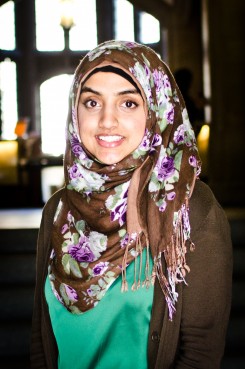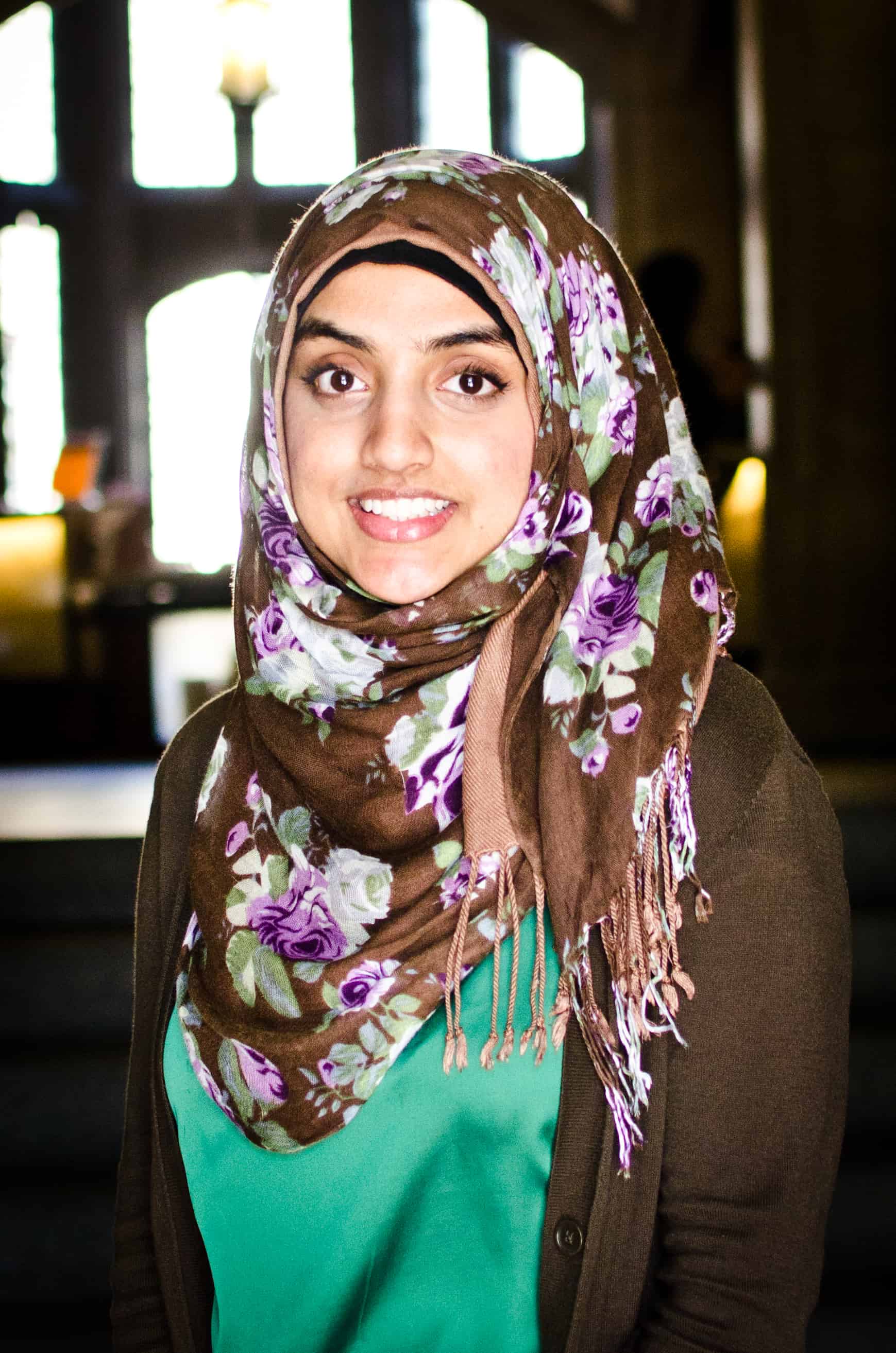“I don’t only want to be seen as the Muslim girl who wears the hijab,” says third-year student, Aisha Raja. “There’s more to my identity than just that.”
Troubled by other students’ negative perceptions of Muslim women, Raja’s studies in ethics, society, and law have encouraged her participation in dialogues aimed to counteract these stereotypes.

BERNARDA GOSPIC/THE VARSITY
Lounging in her chair at Trinity’s Buttery Café, she reminisces about incidents that have impacted her experience at U of T.
In her first year, after leaving her close-knit suburban community, she found herself among the many strangers populating U of T’s large lecture halls — an intimidating experience shared by many St. George students.
To take part in U of T’s vibrant community and to meet new people, she became involved in the Muslim Students’ Association.
“Its hard to connect with everyone on campus,” Raja points out. “But through the MSA, I met different groups and it gave me the resources to get involved in other campus organizations and cultural and religious groups.”
Her dedication led her to become MSA’s vice president of social advancement. In this position, Raja organizes social justice initiatives which present positive images of Muslim students at U of T, such as the MSA-run orphan sponsorship program.
Despite her successes, unfortunately, she says that some members of U of T’s community are still determined to associate her with the stereotype of an “‘exotic Muslim woman.’”
“I feel like when I am doing other things, people focus on ‘It’s a Muslim girl doing this,’ not a Canadian,” she says. “People don’t assume I’m Canadian; they ask where I’m from and will genuinely believe I’m from somewhere else, like Saudi Arabia.”
Raja’s experiences facing stereotypes extends to encounters with students who believe that Muslim women are denied the right to education.
As she expressed her outrage against these misconceptions, her voice grew louder.
“Obviously there are the general stereotypes that Muslim women are very restricted in what they are allowed to do. But education is a value that is emphasized in Islam,” Raja stresses.
She believes that the media influences students’ perceptions through images of burqa-clad women instead of female Muslim leaders.
However, Raja says that the media is not the only perpetrator of these stereotypes. She mentions that there are some professors at U of T who reinforce images of oppressed Muslim women to students, contributing to the misconceptions.
To illustrate her point, Raja talks about professors who display images of women in burqas to represent gender inequality. She argues that it is wrong to assume that a person’s religion determines their social position.
“You can’t just assume that practices in Afghanistan are what are attributed to all Muslims,” says Raja adamantly.
Nonetheless, she admits that these stereotypes impact her contributions to class discussions. Occasionally, she censors her statements because she doesn’t want her comments to be accredited to her religious beliefs.
“Sometimes I’m the only person wearing a hijab in class — I have to be careful what I say because it will be attributed to the ‘Muslim girl in the class’ and not necessarily as Aisha Raja’s opinion,” she explains.
Although she commends the university for accommodating Muslim students with prayer spaces and other resources, Raja believes that there’s still work to be done so that students and faculty recognize that a person’s faith is not the sole determinant of his or her identity.


